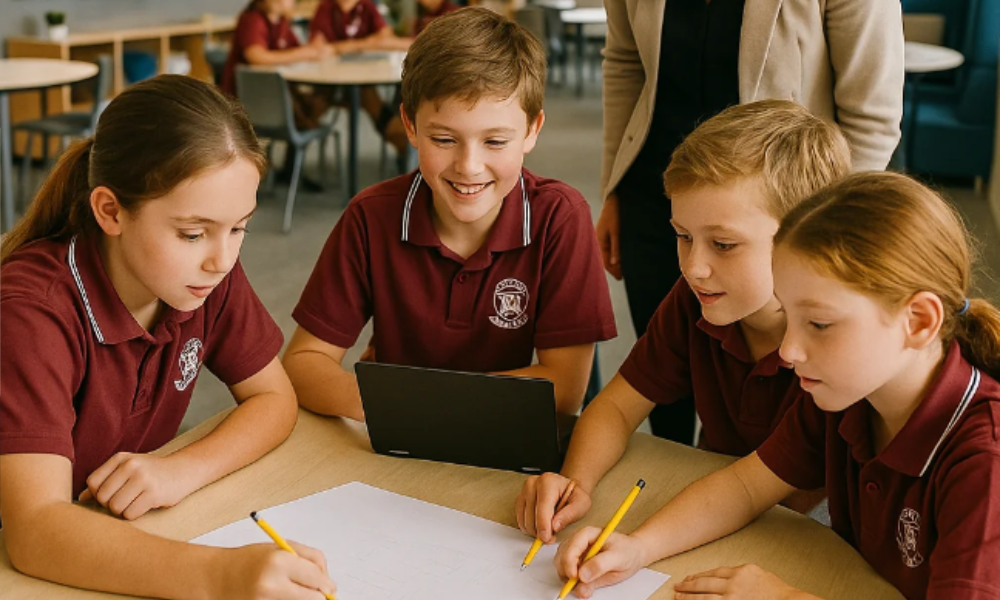
In March this year, more than 1.3 students sat a record 4.5 million online tests in 9,477 campuses and schools across Australia.
Two key differences in this year’s assessment were that students in Years 5, 7 and 9 completed a second NAPLAN cycle since the annual test changed from being held in March instead of May, and new proficiency levels were introduced.
ACARA’s CEO Stephen Gniel said while proficiency levels become more demanding as students move through the NAPLAN years, the new data would reveal how this cohort of students have progressed between 2023-2025.
“This faster turnaround and additional information on student progress means teachers can use the data more effectively to support student learning sooner,” Gniel said in a statement.
“We know that early intervention is key to improving outcomes. By identifying students’ strengths and areas for growth sooner, teachers and schools can implement targeted support earlier.”
However, some experts say there is a more accurate way of tracking how students are performing in the national assessment.
Marian Vidal-Fernandez, an Associate Professor in the University of Sydney’s School of Economics, said comparing different year levels, like Year 5s in 2023 and 2025, can mislead due to changing student cohorts, teaching strategies and testing standards, despite teachers receiving yearly student performance reports.
She says a more accurate approach is to track the same cohort across multiple years – for example, following students who were in Year 3 in 2023 and are in Year 5 in 2025.
“This comparison is especially relevant because the NAPLAN assessment was redesigned in 2023, making it a natural starting point for measuring longitudinal growth,” Associate Professor Vidal-Fernandez told The Educator.
“For instance, if 30% of Year 3 Indigenous students in 2023 required additional support in reading and 31% were developing, tracking these same students in 2025 will reveal whether interventions have been effective.”
Associate Professor Vidal-Fernandez added that if targeted educational policies and resources have been successfully implemented, one would expect a decrease in the proportion needing support and an increase in those achieving at strong or exceeding levels.
“By focusing on cohort progress rather than cross-year comparisons, educators and policymakers can better assess the impact of initiatives and ensure that gaps are being addressed when they are widen over time.”
Inequality, not performance, is the real problem
Associate Professor Vidal-Fernandez says the real issue NAPLAN highlights isn’t not overall performance, but persistent inequality across student groups.
“NAPLAN results in 2024 show that 49% of students in remote areas require additional support, compared to just 7.1% in metropolitan areas,” she said. “This striking disparity highlights that the real issue is not overall performance, but persistent inequality across student groups.”
Associate Professor Vidal-Fernandez noted that while factors such as family expectations around education and socio-economic background play a significant role, the policy focus and resources should target closing these gaps through targeted resources and initiatives—such as Ambassador Schools.
“Students from low Socio-Economic Status [SES] backgrounds often lack access to the time, tools, and support needed to thrive academically,” she said. “Prioritising support for these students is not only a moral imperative but also a sound economic investment.”
Associate Professor Vidal-Fernandez said Australia must focus on addressing entrenched educational inequities if it hopes to lift outcomes for disadvantaged and underrepresented students.
“As Nobel Laureate James Heckman notes, returns on educational investment are highest among disadvantaged children—who are otherwise more likely to experience lower earnings, welfare dependence, poor health outcomes, and involvement in the justice system,” she said.
“Gaps by gender in NAPLAN remain consistent across states: boys underperform in reading by around 4%, while girls trail in numeracy by similar margins. However, disparities for Indigenous students vary widely—28% require extra support in reading in NSW, compared to 37% in Queensland—underscoring the urgent need for equity-focused, localised strategies.”

